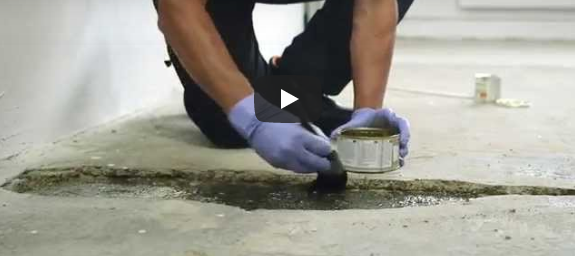If you discover a hole in your floor, it’s essential to promptly address the issue to maintain structural integrity and prevent further damage. Whether caused by wear, pests, or accidental impact, a hole in the floor requires immediate attention to restore the safety and aesthetics of your home. Various methods exist for repairing holes, and the choice of technique depends on the size, location, and flooring material. In this comprehensive guide, we delve into the intricacies of floor hole repair, providing step-by-step instructions and valuable tips to guide you through the process.

Image: littleeagles.edu.vn
Assessing the Hole and Gathering Materials
Prior to commencing repairs, you must thoroughly assess the extent of the damage. Determine the size, shape, and depth of the hole and identify the type of flooring material involved (e.g., hardwood, carpet, laminate). Once the assessment is completed, gather the necessary materials for the repair:
- Matching wood filler or epoxy (for wood floors)
- Patch kit or adhesive tape (for carpet)
- Underlayment (for laminate or floating floors)
- Saw or jigsaw (for cutting replacement planks)
- Sandpaper or sanding block
- Wood glue or construction adhesive
- Clamps or weights (for holding planks in place)
- Gloves, safety glasses, and dust mask (for protection)
Repairing Holes in Hardwood Floors
Hardwood flooring repairs require a precise match to maintain the integrity and aesthetic appeal of the floor. If the hole is relatively small (less than an inch), wood filler can be used for a seamless repair. For larger holes, epoxy resin may be necessary to fill the void and provide structural support.
-
Clean and Prepare the Area: Thoroughly clean the damaged area and remove any debris or splinters. Sand the edges of the hole to create a smooth surface for the filler.
-
Apply Wood Filler: Use a putty knife or spatula to apply the wood filler into the hole, pressing it firmly to ensure complete coverage. Remove any excess filler from the surface.
-
Smooth and Sand: Allow the wood filler to dry completely. Sand the repaired area until it is flush with the surrounding floor. Apply a wood stain or matching finish to blend the repair seamlessly.
Repairing Holes in Carpet Floors
Carpet repairs focus on concealing the hole while maintaining the texture and pile of the carpet. Patch kits or adhesive tape can effectively mend small holes, while larger holes may require the replacement of a section of carpet.
-
Trim the Edges: Neatly trim the edges of the hole using a sharp utility knife or scissors, creating clean, straight lines.
-
Apply Patch or Tape: Select a patch or adhesive tape that closely matches the color and texture of your carpet. Apply the patch or tape firmly over the hole, ensuring a secure bond.
-
Vacuum and Groom: Once the patch or tape is in place, vacuum the area thoroughly to blend it with the surrounding carpet. Use a carpet brush or groomer to restore the pile’s texture and direction.

Image: viewfloor.co
Repairing Holes in Laminate or Floating Floors
Laminate or floating floors often require underlayment repair before addressing the visible flooring. If the underlayment is damaged, it must be replaced to ensure proper support and prevent further buckling or warping of the floor.
-
Locate the Damaged Underlayment: Identify the section of underlayment beneath the hole and use a sharp utility knife or saw to carefully cut it out.
-
Install New Underlayment: Measure and cut a piece of replacement underlayment to the same size as the removed section. Insert the new underlayment into the hole and secure it with adhesive or tape.
-
Replace the Flooring Plank: If the hole extends through the flooring plank, it may need to be replaced. Measure and cut a new plank to fit the opening. Apply wood glue or construction adhesive to the edges of the plank and carefully insert it into place. Clamp or weight the plank until the adhesive sets.
How To Fix Hole In Floor
Tips for Effective Floor Hole Repair
- Use high-quality materials designed for floor repair to ensure durability and longevity.
- Match the type and color of the flooring material as closely as possible for a seamless repair.
- Allow sufficient drying or curing time for adhesives and fillers before using the repaired area.
- Protect yourself with gloves, safety glasses, and a dust mask during the repair process.
- If the hole is large or in a heavily trafficked area, consider seeking professional assistance from a flooring contractor.
- Regularly inspect your floors for signs of damage, wear, or holes to prevent them from worsening over time.
By following these steps and incorporating the provided tips, you can effectively repair holes in your floor, restoring the integrity and aesthetic appeal of your home, and ensuring its